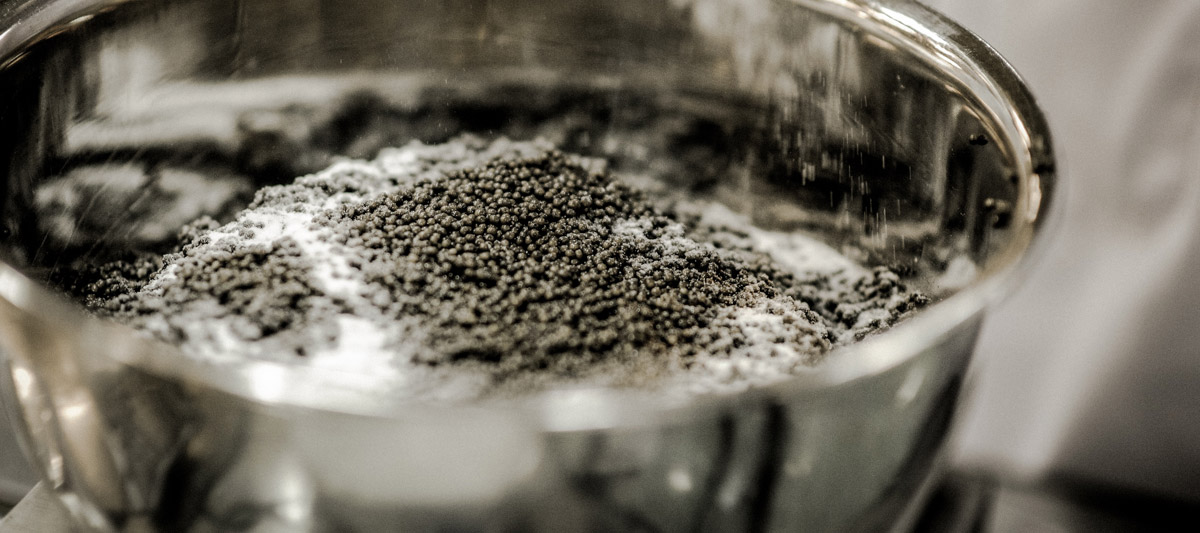No products
- Caviar Guide
- Caviar basics
- What is caviar?
- What is a good caviar?
- How to enjoy caviar?
- How to serve and pair caviar
- What are the types' differences?
- Caviar nutritional values
- Recipes with caviar
- Caviar production
- Caviar producers
- Challenges of sturgeon farming
- Caviar processing steps
- Kaviari expertise - Caviar selection
- Kaviari expertise - Caviar ageing / maturation
- Kaviari expertise - Caviar traceability
- All about sturgeons
- Sturgeons' main types
- Why is sturgeon endangered?
- A protected specie
Caviar processing steps

Whether it is wild or farmed, our caviar is produced using the same techniques that require the savoir-faire of an expert. Indeed, only caviar experts can handle caviar with the utmost precautions and comply with the strict hygiene rules. Everything that comes into contact with the caviar (hands, clothing, appliances) must be completely sterilized.
In the farm, when the sturgeon reaches 3 kg (between 3 and 5 years old), we can identify the sex by ultrasound. Later, around the eighth year, a biopsy is performed on each female to assess the maturity of the eggs (color and size). Each fish is weighed and identified by a register number that appears on all the caviar containers to ensure the caviar traceability.
1/After stunning and bleeding the fish, each sturgeon is transported to a preparation room for washing. The belly of the fish is manually opened on a marble table. Its rogue, the pocket containing the eggs (representing 15 to 18% of the weight of the sturgeon) is delicately removed from the female sturgeon and weighed. Still manually, it is then strained, washed and drained.
2/We then move on to the most important manipulation: the salting, which depends on the size of the caviar, the tastes of the consumer and the importer's requirements (Kaviari has a very precise specification on the caviar production and the percentage of salt used). Either we only use table salt or we add borax (borate of sodium hydroxide). Quantities are subject to constant control. Indeed, salting is one of the most delicate operations of caviar production. If there is not enough salt, the caviar deteriorates rapidly and if there is too much, it dries out and becomes sticky. Therefore, it is this mixture of salt and sturgeon eggs that give caviar its unique taste!
3/After being salted and stirred to give it a consistent texture, the caviar is poured into 1.8 kg original caviar tins. The containers are sealed under pressure to remove any excess air or liquid. This is a very important step to obtain a moist caviar, not too dry, nor too sticky.
4/Finally the ageing process can start, this crucial step will give the caviar its complexity and all its subtle fragrance notes.